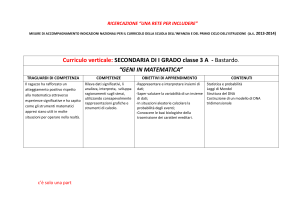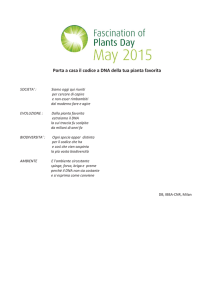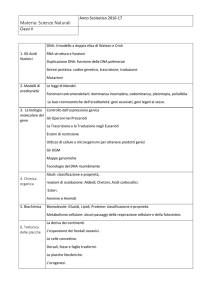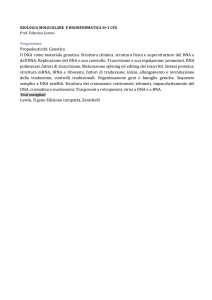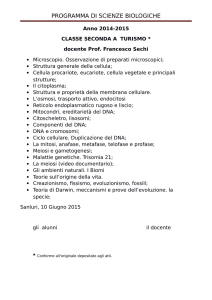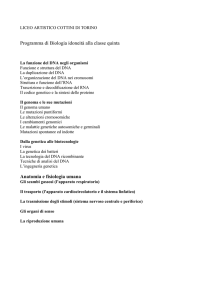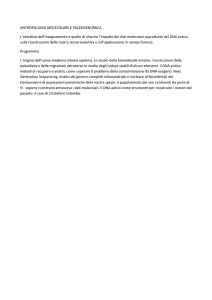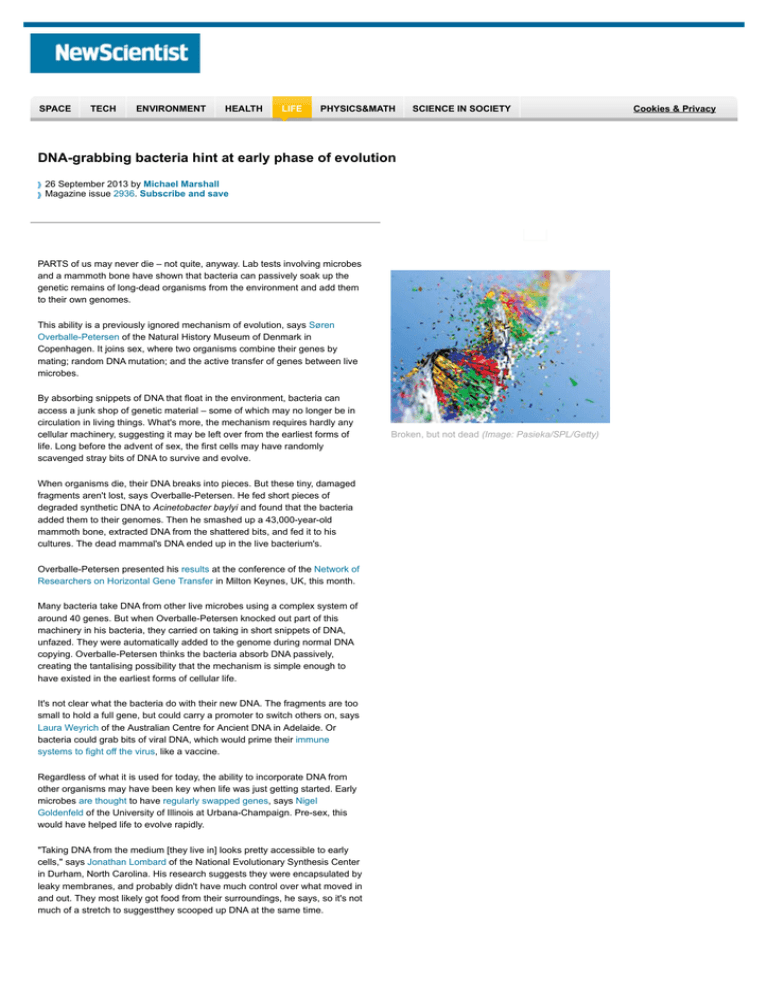
SPACE
TECH
ENVIRONMENT
HEALTH
LIFE
PHYSICS&MATH
SCIENCE IN SOCIETY
DNA-grabbing bacteria hint at early phase of evolution
26 September 2013 by Michael Marshall
Magazine issue 2936. Subscribe and save
PARTS of us may never die – not quite, anyway. Lab tests involving microbes
and a mammoth bone have shown that bacteria can passively soak up the
genetic remains of long-dead organisms from the environment and add them
to their own genomes.
This ability is a previously ignored mechanism of evolution, says Søren
Overballe-Petersen of the Natural History Museum of Denmark in
Copenhagen. It joins sex, where two organisms combine their genes by
mating; random DNA mutation; and the active transfer of genes between live
microbes.
By absorbing snippets of DNA that float in the environment, bacteria can
access a junk shop of genetic material – some of which may no longer be in
circulation in living things. What's more, the mechanism requires hardly any
cellular machinery, suggesting it may be left over from the earliest forms of
life. Long before the advent of sex, the first cells may have randomly
scavenged stray bits of DNA to survive and evolve.
When organisms die, their DNA breaks into pieces. But these tiny, damaged
fragments aren't lost, says Overballe-Petersen. He fed short pieces of
degraded synthetic DNA to Acinetobacter baylyi and found that the bacteria
added them to their genomes. Then he smashed up a 43,000-year-old
mammoth bone, extracted DNA from the shattered bits, and fed it to his
cultures. The dead mammal's DNA ended up in the live bacterium's.
Overballe-Petersen presented his results at the conference of the Network of
Researchers on Horizontal Gene Transfer in Milton Keynes, UK, this month.
Many bacteria take DNA from other live microbes using a complex system of
around 40 genes. But when Overballe-Petersen knocked out part of this
machinery in his bacteria, they carried on taking in short snippets of DNA,
unfazed. They were automatically added to the genome during normal DNA
copying. Overballe-Petersen thinks the bacteria absorb DNA passively,
creating the tantalising possibility that the mechanism is simple enough to
have existed in the earliest forms of cellular life.
It's not clear what the bacteria do with their new DNA. The fragments are too
small to hold a full gene, but could carry a promoter to switch others on, says
Laura Weyrich of the Australian Centre for Ancient DNA in Adelaide. Or
bacteria could grab bits of viral DNA, which would prime their immune
systems to fight off the virus, like a vaccine.
Regardless of what it is used for today, the ability to incorporate DNA from
other organisms may have been key when life was just getting started. Early
microbes are thought to have regularly swapped genes, says Nigel
Goldenfeld of the University of Illinois at Urbana-Champaign. Pre-sex, this
would have helped life to evolve rapidly.
"Taking DNA from the medium [they live in] looks pretty accessible to early
cells," says Jonathan Lombard of the National Evolutionary Synthesis Center
in Durham, North Carolina. His research suggests they were encapsulated by
leaky membranes, and probably didn't have much control over what moved in
and out. They most likely got food from their surroundings, he says, so it's not
much of a stretch to suggestthey scooped up DNA at the same time.
Broken, but not dead (Image: Pasieka/SPL/Getty)
Cookies & Privacy
PHENOMENA: NOT EXACTLY ROCKET SCIENCE
Columbian mammoth skeleton. Credit: WolfmanSF
NOT EXACTLY ROCKET SCIENCE: November 18, 2013
The Bacteria That Absorbed Mammoth DNA
by
Ed Yong
An average gram of soil is full of DNA. Some of it is enclosed inside bacteria, worms or
insects, but of lot of it is just lying around. It came from living things that died and
decomposed, releasing their genetic payload into their surroundings. Exposed to the
elements, this environmental DNA breaks, degrades and distorts.
But, sometimes, it finds its way back into a living thing.
Bacteria can feed on bits of DNA from their surroundings. They can also incorporate these
fragments into their own genome, as easily as you might put a new book onto your shelf.
These horizontal gene transfers give bacteria an edge in the evolutionary race. Rather than
just inheriting genes from their ancestors, they can pick up fresh DNA from all around
them.
Now, Soren Overballe-Petersen from the University of Copenhagen has shown that they
can even do this with extremely short and damaged pieces of DNA. As dramatic proof, he
showed that soil microbes can incorporate 43,000-year-old mammoth DNA from a
fossilised bone.
Let’s be clear: it’s irrelevant that the DNA came from a mammoth. Mammoth DNA is like
human DNA is like cabbage DNA. It’s the same molecule. There’s no special mammothity
imbued within strands that small. The microbes aren’t suddenly going to sprout tusks and
a shaggy coat.
The point is that the DNA is old. Really damn old. If an Ice Age microbe (or, indeed, a
mammoth) could donate DNA to a living bacterium, then “generations long past can
influence the evolution of future generations,” says Overballe-Peterson. He calls it
anachronistic evolution. “It’s something we’ve not considered before and it’s not in our
models of microbe evolution.”
“The idea is something very similar to [a concept called] genome recycling,” says Hendrik
Poinar from McMaster University, who studies microbes and ancient DNA. “This idea
that DNA of very different ages could make its way back into the evolutionary light of day
is certainly a fascinating possibility.”
It’s also possible that the more bacterial there are in the environment, the faster they
evolve. If you have a lot of microbes around, you have more DNA in the environment for
the survivors to pick up and use. “There’s the possibility of a positive evolutionary
feedback loop,” says Overballe-Petersen.
Scientists have long known that bacteria can efficiently suck up DNA from their
surroundings, but these fragments have typically been thousands of ‘letters’ long. “When
the fragments become shorter, the efficiency drops very fast,” says Overballe-Petersen.
However, his team, led by ancient DNA specialist Eske Willerslev, showed that the soil
microbe Acinetobacter baylyi can take up fragments just 20 to 120 letters long.
The bacteria presumably digest much of this DNA, but they can also integrate it into their
genomes. This doesn’t require any fancy tricks. Bacteria need to make copies of their DNA
whenever they divide, and if the environmental strands are around at the time, they can
get slotted in.
“It’s not something that the bacterium tries to do, or necessarily gives it an advantage,”
says Overballe-Petersen. “It’s a consequence of feeding on what it finds around itself. I
liken it to rummaging through garbage. Most of the time it’ll go nowhere, but you could
find all sorts of wonderful things that people have thrown out.”
The team found that this process works even if the environmental DNA is severely
damaged, and they wondered if bacteria could take up extremely old and tattered DNA
too. The problem is that it’s hard to find DNA that definitely came from ancient microbes
—too often, modern bugs contaminate the samples. So, the team turned to a source of
DNA that they knew was definitively ancient—a 43,000 year old mammoth bone. “We
already had one available,” says Overballe-Petersen. “And we’re pretty confident that a
mammoth didn’t run around the lab last week and dropped hair into our samples.
It worked. The soil microbes made the mammoth DNA part of them. This genetic
material, broken and shattered by many millennia of decay, is now back in living cells
again.
The concept is tantalising but “there is no evidence that this has occurred in nature,” says
Howard Ochman from Yale University. “Just from scanning genomes, horizontal gene
transfer from [living] sources seems to have had a much, much larger impact on bacterial
evolution.”
And it’s still the case that bacteria are much less efficient at transforming their genomes
with small pieces of DNA than with larger fragments. On the other hand, OverballePetersen argues, there’s a lot of free DNA in the environment. Even if bacteria aren’t great
at picking it up, they have many chances to do so.
Poinar says that there are two big questions: how often does this happens in the wild, and
how often does the extra DNA changes something meaningful in the bacteria rather than
doing nothing? After all, these fragments are far too small to include entire genes. Adding
them to a bacterium’s genome is like adding a few letters or words to a book, rather than
an entire page.
But the team notes that it doesn’t take many such changes to, say, turn a vulnerable
bacterium into a drug-resistant one. That has important implications for hospitals, which
are often teeming with drug-resistant bacteria. Medical equipment, toilets and water
supplies could all be sources of DNA carrying resistance genes. “In hospital rooms, you’re
focused on killing the living bacteria. But that’s not enough to destroy the DNA, which
could fragment and potentially be picked up again,” says Overballe-Petersen. “You’d have
a vicious cycle of recurring resistance.”
If this is a genuine problem (and that’s not clear yet) it would also be a difficult one to fix.
Destroying environmental DNA is very hard. In Willerslev’s lab, they wipe their work
surfaces with strong chlorine solutions, and irradiate them at night with ultraviolet lights.
“You can’t treat patients in this way, but maybe you could use UV lights in operating
theatres, when they’re not in use in the night.”
Reference: Overballe-Petersen, Harms, Orlando, Moreno Mayar, Rasmussen, Dahl,
Rosing, Poole, Sicheritz-Ponten, Brunak, Inselmann, de Vries, Wackernagel, Pybus,
Nielsen, Johnsen, Nielsen & Willerslev. 2013. Bacterial natural transformation by highly
fragmented and damaged DNA. PNAS http://dx.doi.org/10.1073/pnas.1315278110
20 novembre 2013
Il batterio che inventò l'evoluzione "anacronistica"
Il batterio Acinetobacter baylyi è in grado di inglobare nel proprio genoma frammenti di DNA degradati dispersi nell'ambiente, anche
appartenuti ad organismi vissuti decine di migliaia di anni fa, come il mammut. La scoperta svela un nuovo meccanismo di evoluzione
dei batteri, dimostrando inoltre la possibilità di un incredibile salto temporale nel trasferimento dell'informazione genetica da un
organismo a un altro, secondo un processo battezzato "evoluzione anacronistica”. (red)
Che fine fa il DNA degli organismi dopo la loro morte? Viene degradato e disperso nell'ambiente, ma i suoi frammenti possono resistere fino a un milione di
anni ed essere addirittura inglobati nel genoma di alcune specie di batteri, come hanno scoperto Søren Overballe-Petersen dell'Università di Copenhagen e
colleghi di un'ampia collaborazione internazionale, che ne riferiscono sui "Proceedings of the National Academy of Sciences".
La materia organica, decomponendosi, disperde continuamente materiale genetico nell'ambiente. La degradazione del DNA nucleare inizia con la morte
cellulare e si deve all'azione congiunta di enzimi noti come nucleasi e successivamente dei microbi che si nutrono di materia organica. Allo stesso modo, il DNA
extracellulare viene degradato da processi fisici, chimici e biochimici, i più importantidei quali sono l'idrolisi e l'ossidazione.
La degradazione della catena molecola di DNA procede assai rapidamente, ed è per questo che non ci si aspetterebbe che i frammenti, che raramente
superano la lunghezza di 100 coppie di basi, possano resistere una volta dispersi. Invece, possono sopravvivere per migliaia di anni, e addirittura fino a un
milione di anni in condizioni di conservazione ottimali.
Il DNA frammentato o chimicamente danneggiato è un'importante fonte di
nutrimento per i microbi, ma finora non erano emerse indicazioni che contribuisse
all'evoluzione del genoma batterico. In questo studio, Overballe-Petersen e colleghi
hanno testato l'ipotesi che i batteri possano acquisire questo DNA degradato,
anche di antica origine, mediante trasferimento genico orizzontale, un processo
grazie al quale le cellule batteriche integrano nel proprio genoma DNA che si trova
libero nell'ambiente. Questo processo finora è stato documentato sperimentalmente
solo per sequenze nucleotidiche molto lunghe o per interi geni.
La sperimentazione in laboratorio ha dimostrato che ciò può effettivamente
avvenire: il batterio della specie Acinetobacter baylyi, un organismo modello molto
utilizzato nelle ricerche di microbiologia, è in grado di acquisire corti frammenti di
DNA – anche di meno di 20 coppie di basi - e persino derivati da ossa di mammut
di 43.000 anni fa.
Queste evidenze sperimentali hanno portato i ricercatori a enunciare due nuovi
principi biologici generali: il primo è che la degradazione chimica del DNA non basta
a renderlo biologicamente inattivo, e il secondo è che sequenze di DNA disperse
nell'ambiente, anche quando sono molto frammentate, possono contribuire
Rappresentazione artistica della doppia elica del DNA: anche corti frammenti della molecola,
di lunghezza inferiore alle 20 coppie di basi, possono essere inglobati nel genoma dei batteri
all'evoluzione del genoma dei batteri secondo meccanismi finora sconosciuto. La
(© Denis Scott/CORBIS)
capacità dei batteri di integrare frammenti di DNA anche molto antico introduce
infatti un incredibile salto temporale nel trasferimento dell'informazione genetica da un organismo a un altro: Overballe-Petersen e colleghi hanno battezzato
questo nuovo fenomeno “evoluzione anacronistica”.
La limitata lunghezza dei frammenti genetici integrabili dai batteri ha notevoli conseguenze, studiate dagli autori con simulazioni al computer. La prima
conseguenza è che i geni batterici che ospitano i frammenti acquisiti possono perdere la loro funzionalità, cosa che invece non succede se vengono acquisiti
interi geni, che anzi ampliano il pool di proteine che il batterio è in grado di sintetizzare. Con nuovi frammenti, il genoma batterico nel suo complesso
tenderebbe quindi a diminuire la sua funzionalità invece che ad aumentarla. Una seconda conseguenza è che quando il processo riguarda batteri patogeni per
l'uomo, l'acquisizione di frammenti di DNA potrebbe far emergere ceppi resistenti agli antibiotici, un problema di enorme rilevanza in tutto il mondo.

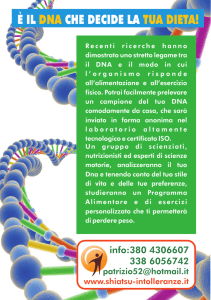
![mutazioni genetiche [al DNA] effetti evolutivi [fetali] effetti tardivi](http://s1.studylibit.com/store/data/004205334_1-d8ada56ee9f5184276979f04a9a248a9-300x300.png)
![ESTRAZIONE DNA DI BANANA [modalità compatibilità]](http://s1.studylibit.com/store/data/004790261_1-44f24ac2746d75210371d06017fe0828-300x300.png)
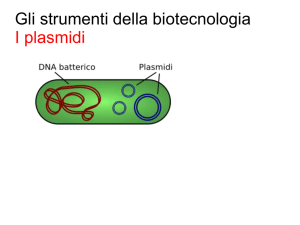
![(Microsoft PowerPoint - PCR.ppt [modalit\340 compatibilit\340])](http://s1.studylibit.com/store/data/001402582_1-53c8daabdc15032b8943ee23f0a14a13-300x300.png)
